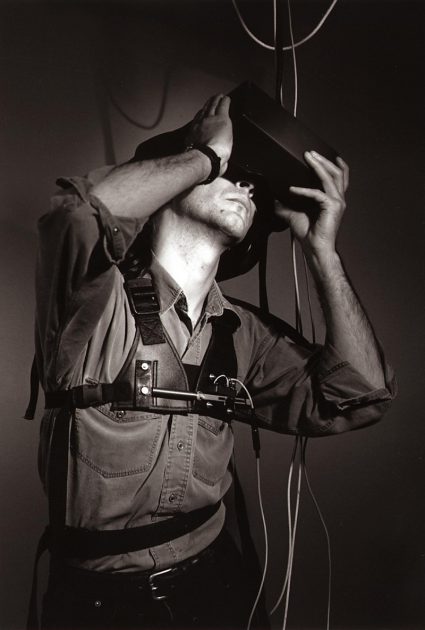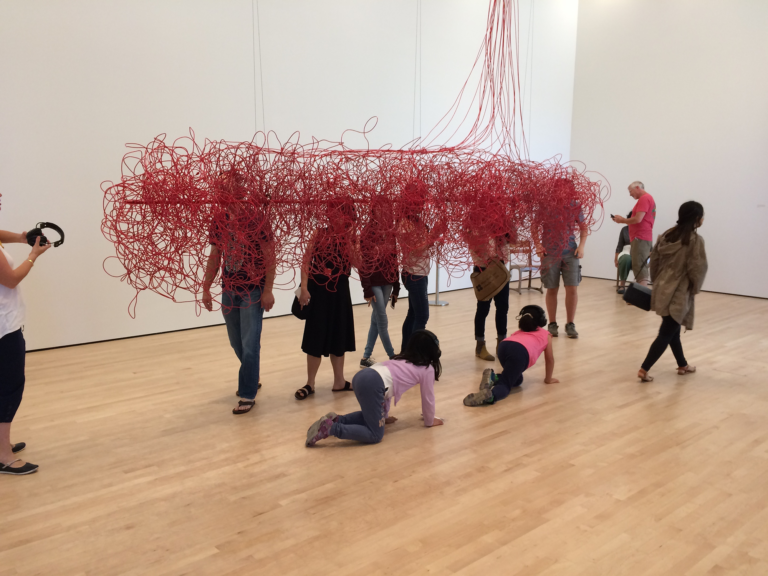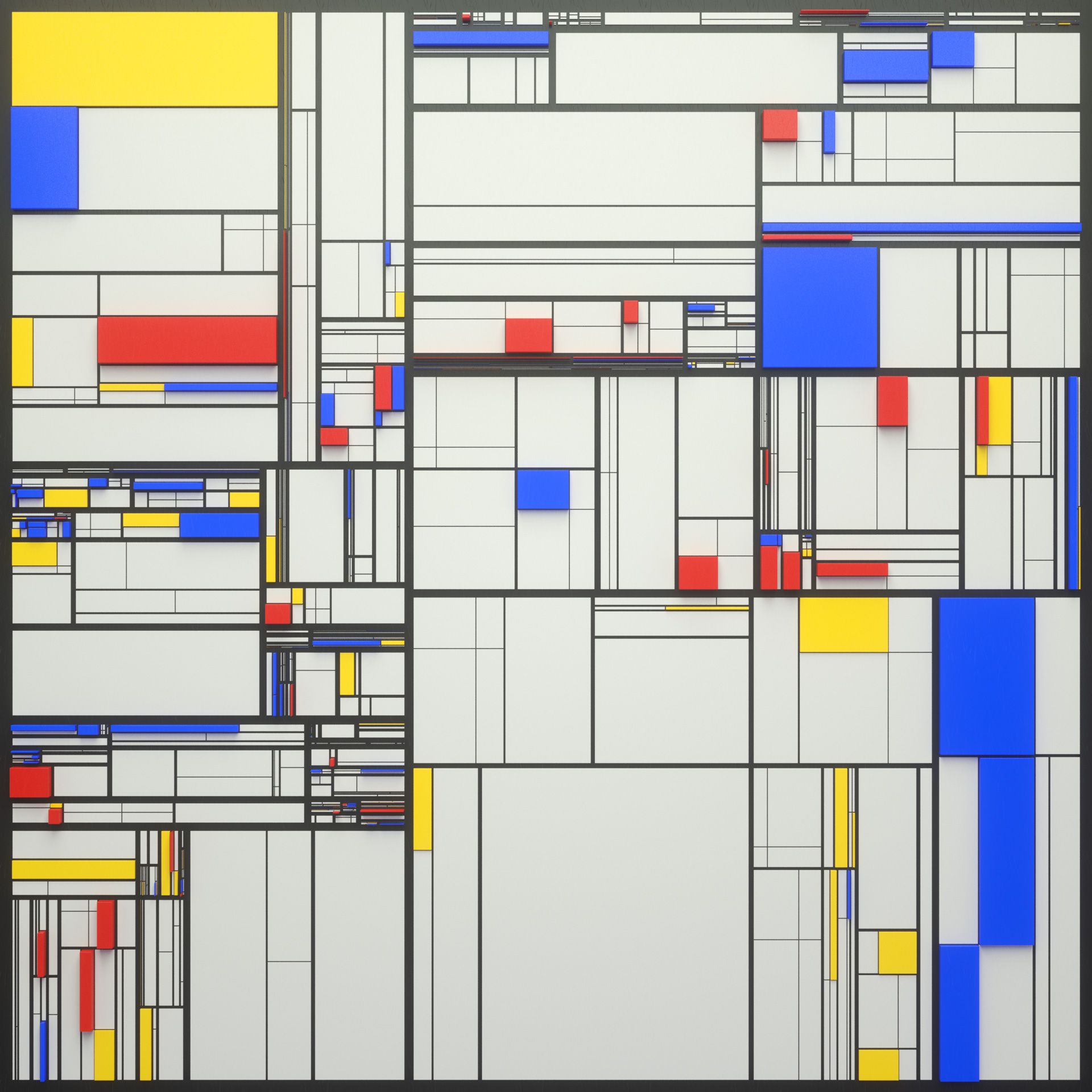Irene Posch & Ebru Kurbak – The Embroidered Computer
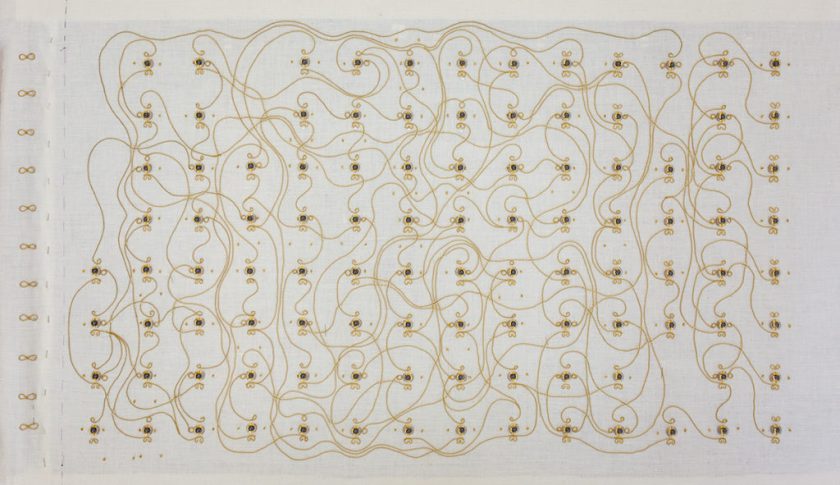
The Embroidered Computer is a programmable 8-bit computer that’s made completely out of magnets, glass & metal beads, the cloth frame, and metal threads. It uses gold thread to create relays, and “Individual relays switch and consequently pass through signals to perform the calculation based on the instructions given.”
What I admire about this project is that the artist took more traditional fields of embroidery and quilting, and re purposed them as a way to create a simple computer. The fact that it is an 8-bit computer is also important because it highlights the history of computing as well as the simplicity (in contrast to modern cutting edge tech like multi GPU computers, etc)
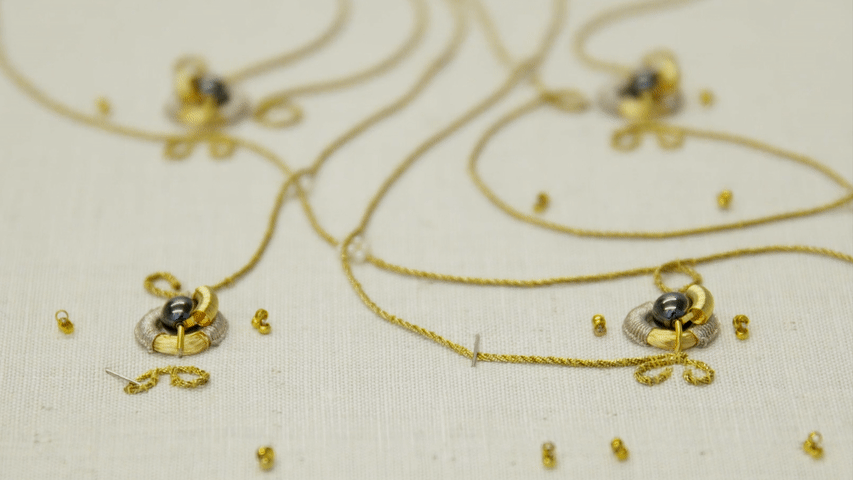
There is not a lot of documentation of how this piece was physically created, but we have the schematics of the logic circuit, and so by necessity we can mostly assume that it was created by embroidering thread in the pattern of the schematic, following the outline and sewing the various pieces and attachments. There was a very specialized team involved in creating this piece.
This work seems to have been inspired by a history of wearable technology, interactive textiles, and embroidered circuitry such as the kind of stuff found on http://www.kobakant.at/DIY/
People involved in making the project: (quoted from link)
”
Irene Posch, Ebru Kurbak
Computer circuit design and simulation software: Matthias Mold
Generative routing: Raimund Krennmüller
Embroidery consultant: Susanne Frantal
Metal thread consultant: Sophie Fürnkranz
Crafting assistants: Pascale Ballieul, Abdulrahman Ghibeh, Ramona Hirt, Ngo Thi Dao Nha, Katta Spiel, Isabella Wöber, with special thanks to Eva Ganglbauer, Anna Masoner and Angela Posch
Video documentation: Ulrich A. Reiterer / UAR Media
Funded by the Austrian Science Fund (FWF): AR 284-G21 in the Programme for Arts-based Research (PEEK).
”



